
 Selamat Datang! Huan Eng! Wanakam! Welcome! Bonjour!
Selamat Datang! Huan Eng! Wanakam! Welcome! Bonjour!
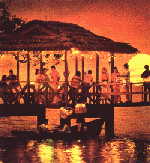 What makes the Penang experience even more unique is that Penang also offers sunny beaches and a mixture of historic buildings, intact with their former grandeur enclosed in the island itself as well as modern structures.
What makes the Penang experience even more unique is that Penang also offers sunny beaches and a mixture of historic buildings, intact with their former grandeur enclosed in the island itself as well as modern structures.Most noteworthy to some is Penang's sumptious cuisines. Penang is noted for its exotic dishes all over the world.Year round festivals and beautiful sunny weather makes anytime a perfect time to visit Penang.
Together with its warm hospitality and great accomodations ranging from 5 star hotels to budget hotels for the thrifty traveller, Penang offers the best holiday experience in the South Asia Region!
 |
Penang offers a heady and exotic mix of various sights, cultures, buidings old and new, intoxicating scents and lively sounds within the narrow streets of Georgetown steeped in age-old history.
|
 |
Heritage In a historic city with old world charm, offering a complete environment of period architecture, from the grandeur of public buildings, beautiful villas and temples of great craftsmanship, to the vernacular shophouses, which make the streetscape of Penang uniquely memorable. Everywhere, you will find whole ensembles of unified design, gracefully decorated with intricate stucco and elaborate woodcarving. |
 |
Monuments Nowhere else in the world can you find such a concentration of churces, mosques as well as Chinese and Hindu temples. In Penang, you will discover monuments of the world's great religions and civilizations in their old, intimate surroundings |
 |
Nature The tropical jungle of Malaysia, rich with flora from the beach into cool forests ruptured with streams and waterfalls. Gentle hikes to isolated beaches on the other side of the island. |
 |
Sun & Sea Nine miles of golden beach with fine sands and swaying palms. Sea sports like boating, parasailing and water-skiing. Scuba-diving among the corals in the crystal blue, deep waters of nearby islands. A wide choice of international standard resort hotels along the natural jungle-fringed beach. Lagoon-shaped swimming pools and great poolside recreation. Cruises on a Chinese junk or around the island in a yacht. Sunny, sunny weather. |
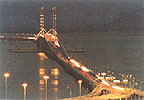 |
|
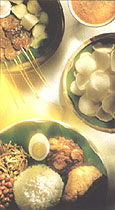 Penang Food is both famous and fabulous. The average Penang hawker can make a living anywhere in the country, just by putting up a sign that says his food hails from Penang. An infinite variety of dishes are yours to savour - prepared with traditional methods, using fresh ingredients from the wet markets.
Penang Food is both famous and fabulous. The average Penang hawker can make a living anywhere in the country, just by putting up a sign that says his food hails from Penang. An infinite variety of dishes are yours to savour - prepared with traditional methods, using fresh ingredients from the wet markets.
For those who want to eat out and sample the local cuisine, a delectable variety of exotic dishes comprising Malay, Chinese, Indian, Indian Muslim, Thai and Indonesian as well as Western and Japanese food are readily available at reasonable prices.
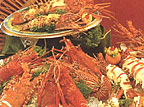 With an abundant supply of daily fresh supplies from the surrounding
seas, Penang is naturally a leading centre for sea food. While there are
many restuarants which offer
good food, one can patronise modestly furnished stalls which sprout
all over the island; there the atmosphere is casual and the food
relatively inexpensive. For the more adventurous visitor, hawker food
is available at roadside stalls along Kimberley Street, near the
Lai Lai Burmah Road Supermarket (formerly Super), the Esplanade and Gurney Drive.
With an abundant supply of daily fresh supplies from the surrounding
seas, Penang is naturally a leading centre for sea food. While there are
many restuarants which offer
good food, one can patronise modestly furnished stalls which sprout
all over the island; there the atmosphere is casual and the food
relatively inexpensive. For the more adventurous visitor, hawker food
is available at roadside stalls along Kimberley Street, near the
Lai Lai Burmah Road Supermarket (formerly Super), the Esplanade and Gurney Drive.
Various Penang Cuisine
An introduction to the local cuisine of Penang.
An infinite variety of dishes are yours to savour - prepared with
traditional methods, using fresh ingredients from the wet markets.
|
|
Hawker food
Desserts
Chinese cuisine
Indian cuisine
Nonya cuisine
Malay cuisine
Western food
Japanese food
Seafood
Tropical fruits |
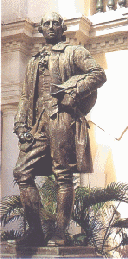 History Of
Penang
History Of
Penang
Penang today bears the mark of an early history of successive foreign influences - from the early Indian Civilization that took root in northern Malaya to that of the Portugese, Dutch and later the British who came to this part of the world in search of spices and stayed to participate in the lucrative trade.
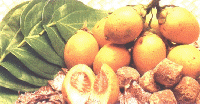 The history of modern Penang can be traced back to 1786 when Francis Light managed to persuade the Sultan of Kedah to cede "Pulau Pinang" (island of the Betel nut) to the British East India Company. Light landed at the site of the present Esplanade and according to legend, fired gold coins into the surrounding jungle to induce his men to clear the area. The island was originally named Prince of Wales Island and the settlement that soon grew up was named Georgetown after King George III.
The history of modern Penang can be traced back to 1786 when Francis Light managed to persuade the Sultan of Kedah to cede "Pulau Pinang" (island of the Betel nut) to the British East India Company. Light landed at the site of the present Esplanade and according to legend, fired gold coins into the surrounding jungle to induce his men to clear the area. The island was originally named Prince of Wales Island and the settlement that soon grew up was named Georgetown after King George III.
 In 1832, Penang formed part of the Straits Settlement with Malacca and Singapore. It flourished and grew to be a major trading post for a lucrative trade in tea, spices, china and cloth. Penang's fortune also rose from exporting the produce of the mainland, rich with tin and cash crops. Malaya's tin-miners and rubber magnates built their opulent mansions on this island and sent their children to the schools here.
In 1832, Penang formed part of the Straits Settlement with Malacca and Singapore. It flourished and grew to be a major trading post for a lucrative trade in tea, spices, china and cloth. Penang's fortune also rose from exporting the produce of the mainland, rich with tin and cash crops. Malaya's tin-miners and rubber magnates built their opulent mansions on this island and sent their children to the schools here.
For more than a hundred years, Penang remained under British Colonial rule until 1957 when it gained independence and became one of the states of the newly formed Federation of Malaya and later Malaysia in 1963.
From the beginning, Penang attracted enterprising people from all over Asia to trade, settle, and build a city of strong civic pride and great traditions.
Slowly, over two centuries, the original Pearl of the Orient was cultivated.
 During Your
Stay, you could....
During Your
Stay, you could....
|
Penang has attractive beaches that stretch for miles from Tanjong Bungah to Batu Ferringhi right up to Telok Bahang. At Tanjong Bungah, the beaches are suitable for swimming. At the beachfront in Batu Ferringhi several watersports operators provide sailing and para-sailing gear and speed-boating facilities. Telok Bahang is a picturesque stretch of traditional Malay homes with a pier made of wooden stakes. From here, visitors can hire a boat to take them to the unspoilt beaches of Muka Head and Pantai Kerachut (Monkey Beach).
Penang museum and art gallery - formerly the Penang Free School building , it was built in 1816 and houses a fine collection of historical documents, Malay treasures, Straits Chinese furniture, embroidery and custumes. It exhibits the fishing, agricultural and natural history of the island and its geographical educational and economic life. The art gallery displays several paintings - and holds frequent exhibitions of works - of local artists. Located at Farquhar Street, it opens daily from 9-12 noon and 2.45-5 pm. Closed on Sundays and public holidays, free admission.
Logan Memorial and high court - A marble statue stands in the high court compound dedicated to James Richardson Logan, a prominent lawyer and one-time editor of the `Penang Gazette'. Logan devoted his life to serving the public and was a strong advocate of freedom of speech, law and order until his death in 1869. Located in Farquhar Street opposite the Museum.
St. George's Church - A magnificient edifice built by convicts between 1817 and 1819, it is one of the oldest Anglican churches in Malaya and Singapore. In front of the church stands a monument to Capt. Francis Light. The building has semi-arches, mouldings, doric columns and pillars; the roof which was originally flat is now gable-shaped. Also located next to the Museum.
Cheong Fatt Tze Mansion - Built by a Kwangtung businessman, this Chinese mansion of the 18th and 19th century is believed to be one of only three such buildings remaining outside China. The building has ancient tiled roofs, cobbled courtyards, russet brick walls and steel spiral stairways. It contains collections of rare porcelain, sculptures and carvings, tapestries and embroideries, lacquers, bronzes and other antiques. Located in Leith Street.
Fort Cornwallis and King Edward Circus Clock Tower - Originally a wooden structure, it was rebuilt between 1808 and 1810 by convict labour. Protruding from the fort's rampart are cannons retrieved by the British from pirates who had captured them from the Johore Sultanate.The main cannon 'Seri Rambau' is said to date back to 1613 and, according to local belief, childless women can conceive by placing flowers in its barrel and offering special prayers.The fort is also used as an amphitheatre.
The 60 foot clock tower built at the entrance to the the fort was presented to the town by a local millionaire in 1897 in conjunction with Queen Victoria's diamond jubilee, each foot signifying one year of her reign. Both structures above are at the Esplanade.
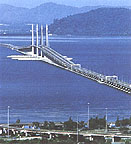 Penang bridge - cable stayed, 13.5 km long, 8.5 km over water, the
rest consisting of a viaduct on the island side with a flyover on the
mainland. Longest in Asia, reputedly third longest in the world. The
island end of the bridge begins near the University at Gelugor and the
mainland end at Seberang Jaya. Toll is payable. Visitors not permitted
to stop along bridge.
Penang bridge - cable stayed, 13.5 km long, 8.5 km over water, the
rest consisting of a viaduct on the island side with a flyover on the
mainland. Longest in Asia, reputedly third longest in the world. The
island end of the bridge begins near the University at Gelugor and the
mainland end at Seberang Jaya. Toll is payable. Visitors not permitted
to stop along bridge.
 KOMTAR - a 65 storey tower atop a 4-storey podium block. Once tallest in SE Asia, it houses all government departments, prime commercial space with civic and recreational facilities. KOMTAR is stragetically situated in the heart of the city on a 11 hectare site. Apparently KOMTAR in the abbreviation for KOMpleks Tungku Abdul Rahman.
KOMTAR - a 65 storey tower atop a 4-storey podium block. Once tallest in SE Asia, it houses all government departments, prime commercial space with civic and recreational facilities. KOMTAR is stragetically situated in the heart of the city on a 11 hectare site. Apparently KOMTAR in the abbreviation for KOMpleks Tungku Abdul Rahman.
Back
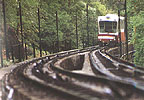 Penang Hill - A popular rendezvous for the local people and visitors,
the hill is 830 metres above sea level. Transport to the summit is by
means of a funicular railway which takes 30 minutes. Here the
temperature drops to 18 C, a welcome change from the heat below. It
offers a panoramic view of Georgetown and the coastal areas of the
mainland. Facilities up the hill include a children's playground,
teahouse, hotel, hill mosque and an Indian temple. The railway station
is located at Air Itam and the services normally operate until late
evening.
Penang Hill - A popular rendezvous for the local people and visitors,
the hill is 830 metres above sea level. Transport to the summit is by
means of a funicular railway which takes 30 minutes. Here the
temperature drops to 18 C, a welcome change from the heat below. It
offers a panoramic view of Georgetown and the coastal areas of the
mainland. Facilities up the hill include a children's playground,
teahouse, hotel, hill mosque and an Indian temple. The railway station
is located at Air Itam and the services normally operate until late
evening.
 Botanical Gardens - It is the only one in Malaysia and occupies an area
of 30 hectares, set in an ideal valley-like area surrounded by
forested hills. The garden has a collection of both local and tropical
flora and fauna. There are hundreds of trees and flowery plants and
dozens of plant houses and nurseries, fern gardens and lily ponds.
Attractions also include a replica of the Penang bridge, the library and
of course, the rhesus monkeys. In the evening,a it is the favourite
spot for family picnics and jogging. Located off the Waterfall Road.
Botanical Gardens - It is the only one in Malaysia and occupies an area
of 30 hectares, set in an ideal valley-like area surrounded by
forested hills. The garden has a collection of both local and tropical
flora and fauna. There are hundreds of trees and flowery plants and
dozens of plant houses and nurseries, fern gardens and lily ponds.
Attractions also include a replica of the Penang bridge, the library and
of course, the rhesus monkeys. In the evening,a it is the favourite
spot for family picnics and jogging. Located off the Waterfall Road.
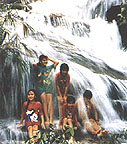 Forest Recreation Park - This is a beautifully landscaped park
, on the
northwest coast. It covers 100 hectares, has several freshwater pools,
footpaths, rest huts, and a children's playground. There is a forestry
museum which houses exhibits of tropical timbers and their products and
preserved insect species. Located at Telok Bahang, 24 km from
Georgetown. Admission is free.
Forest Recreation Park - This is a beautifully landscaped park
, on the
northwest coast. It covers 100 hectares, has several freshwater pools,
footpaths, rest huts, and a children's playground. There is a forestry
museum which houses exhibits of tropical timbers and their products and
preserved insect species. Located at Telok Bahang, 24 km from
Georgetown. Admission is free.
Youth Park - The park is ideal for picnicking, camping, archery and
aero-modelling. Hikers can use a foothpath that leads to Penang Hill.
The centre piece of the park is a roller-skating rink. Located at Quarry
Drive near the Botanical Gardens.
 Khoo Kongsi - The Khoo Kongsi (Leong San Thong - Dragon Mountain Hall)
is the most picturesque clan temple in Malaysia. The two-storey edifice
has pillars and walls adorned with meticulout carvings and gold leaf
inlays and roofbeams made of the finest wood from ancient China. Located
at Cannon Square, admission is free.
Khoo Kongsi - The Khoo Kongsi (Leong San Thong - Dragon Mountain Hall)
is the most picturesque clan temple in Malaysia. The two-storey edifice
has pillars and walls adorned with meticulout carvings and gold leaf
inlays and roofbeams made of the finest wood from ancient China. Located
at Cannon Square, admission is free.
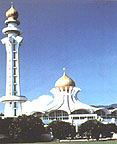 State mosque - Completed in 1980, it stands majestically on a 4.5
hectare site in the Greenlane surburb and is one of the most beautiful
mosques in the country. A magnificient chandelier measuring 20 feet by
16 feet adorns the prayer hall which can accommodate 5000 worshipers.
From the top of the 170 feet minaret, a panoramic view of Georgetown can
be seen.
State mosque - Completed in 1980, it stands majestically on a 4.5
hectare site in the Greenlane surburb and is one of the most beautiful
mosques in the country. A magnificient chandelier measuring 20 feet by
16 feet adorns the prayer hall which can accommodate 5000 worshipers.
From the top of the 170 feet minaret, a panoramic view of Georgetown can
be seen.
Permission to visit the mosque must be obtained from the State Religious Department. Appropriate dressing is required.
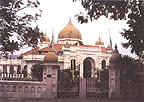 Kapitan Kling Mosque - This is Penang's first mosque, built around 1800
to replace an old attap structure that had been constructed in 1786 by
an Indian Muslim merchant, Cauder Mohideen who was then the `Kling
Kapitan' (Indian Muslim Headsman). Its dome shaped and well placed
minaret reflects Islamic architecture of Indian influence. It is
painted ochre yellow and has a green roof. Located in Pitt Street.
Kapitan Kling Mosque - This is Penang's first mosque, built around 1800
to replace an old attap structure that had been constructed in 1786 by
an Indian Muslim merchant, Cauder Mohideen who was then the `Kling
Kapitan' (Indian Muslim Headsman). Its dome shaped and well placed
minaret reflects Islamic architecture of Indian influence. It is
painted ochre yellow and has a green roof. Located in Pitt Street.
 Kuan Yin (Goddess of Mercy) Temple - Also known as the temple of the
Goddess of Mercy, it was built in 1800 by the first Chinese settlers of
the Hokkien and Cantonese communities. The temple has been designed in
the finest tradition of ancient Chinese architecture. It attracts both
ardent pilgrims seeking the assistance of Kuan Yin and tourists. Puppet
shows are staged in the temple grounds during the Goddess' birthday
celebrations in March and October. Located in Pitt Street.
Kuan Yin (Goddess of Mercy) Temple - Also known as the temple of the
Goddess of Mercy, it was built in 1800 by the first Chinese settlers of
the Hokkien and Cantonese communities. The temple has been designed in
the finest tradition of ancient Chinese architecture. It attracts both
ardent pilgrims seeking the assistance of Kuan Yin and tourists. Puppet
shows are staged in the temple grounds during the Goddess' birthday
celebrations in March and October. Located in Pitt Street.
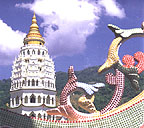 Kek Lok Si - It is the most famous and biggest Buddhist temple in
Malaysia and one of the first built in SE Asia. Work on the temple
started in 1890 along the hill slope of Air Itam and took more than
two decades to complete. Although there are many altars built along the
hill, the dominating structure is the seven-tier, 30 metre high Ban Po
That Pagoda (Pagoda of Ten Thousand Buddhas) which combines Chinese,
Thai and Burmese architecture and craftmanship.
Kek Lok Si - It is the most famous and biggest Buddhist temple in
Malaysia and one of the first built in SE Asia. Work on the temple
started in 1890 along the hill slope of Air Itam and took more than
two decades to complete. Although there are many altars built along the
hill, the dominating structure is the seven-tier, 30 metre high Ban Po
That Pagoda (Pagoda of Ten Thousand Buddhas) which combines Chinese,
Thai and Burmese architecture and craftmanship.
Snake Temple - The Snake Temple or the Temple of the Azure Cloud, which was built in 1850 on a hillock by the roadside, is dedicated to the diety Char Soo Kong. It is a sanctuary for pit vipers which coil around objects on the altars and other parts of the temple. Although poisonous, these snakes are not known to bite. Devotees refer to them as `officers' of the deity and regard them as `holy and harmless'. Located in Bayan Lepas about 1.5 km. from the International Airport.
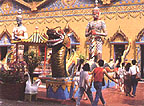 Wat Chayamangkalaram - A Buddhist temple of Thai architecture on a
5-acre site, it houses the world's third largest reclining Buddha which
measures 33 metres. Behind the statue are niches where urns containing
the ashes of the dead are stored. A nine-storey pagoda approximately
165 feet high and reputed to be the highest such structure in the
country is found on the site. There are also statues of gigantic `naga'
serpents, mystical creatures that link earth to heaven, from the
balustrades at the entrance to the meditation hall. Located at Burmah
Lane, admission is free. Photography is not permitted within the temple.
Wat Chayamangkalaram - A Buddhist temple of Thai architecture on a
5-acre site, it houses the world's third largest reclining Buddha which
measures 33 metres. Behind the statue are niches where urns containing
the ashes of the dead are stored. A nine-storey pagoda approximately
165 feet high and reputed to be the highest such structure in the
country is found on the site. There are also statues of gigantic `naga'
serpents, mystical creatures that link earth to heaven, from the
balustrades at the entrance to the meditation hall. Located at Burmah
Lane, admission is free. Photography is not permitted within the temple.
 Sri Mariamman Temple - Built in 1883, it is the oldest and most famous
Hindu temple in Penang. It contains fascinating scupltured gods and
goddesses, amongst them a priceless statue of Lord Subramaniam decorated
in gold, diamonds and other precious stones. The temple has a scupltured
tower at the entrance and inside it are the symbols of the nine planets.
The signs of the zodiac are carved in wood on the ceiling. Located in
Queen Street, admission is free.
Sri Mariamman Temple - Built in 1883, it is the oldest and most famous
Hindu temple in Penang. It contains fascinating scupltured gods and
goddesses, amongst them a priceless statue of Lord Subramaniam decorated
in gold, diamonds and other precious stones. The temple has a scupltured
tower at the entrance and inside it are the symbols of the nine planets.
The signs of the zodiac are carved in wood on the ceiling. Located in
Queen Street, admission is free.
